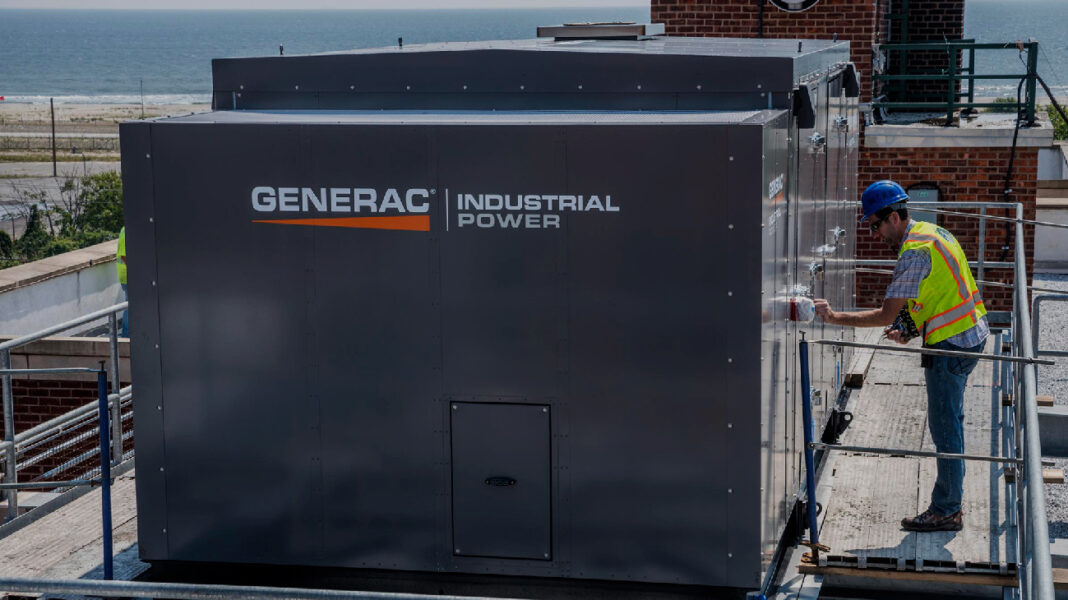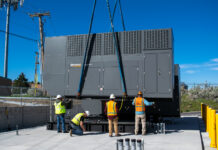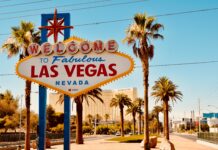Key NFPA standards that affect your generator
The National Fire Protection Agency (NFPA) is an independent standards organization whose mission it is to reduce fire risks in everyday life. The NFPA develops their standards using the ANSI process and are then typically adopted into state statutes. This means that they require compliance in order to get your authority having jurisdiction’s (AHJ’s) approval of your standby generator for permanent installation. We will go over some of the most important NFPA standards pertaining to standby generators and which sections pertain to areas of compliance for easy reference.
Scope:
- Guidelines for the assembly, installation, and performance of electrical power systems to supply critical and essential needs during outages. The requirements of this standard are considered necessary to obtain the minimum level of reliability and performance, particularly where life safety needs are involved.
Levels:
- Level 1 – Where failure could result in the loss of human life (NFPA 110: 4.4.1)
- Level 2 – Failure is less critical to human life, but could hamper fire rescue (NFPA 110: 4.4.2)
Fuel:
- Fuel options (NFPA 110: 5.1.1)
Fuel Reliability:
- Fuel system design shall provide for a supply of clean fuel to the prime mover. (NFPA 110: 7.9.1.2)
- Tanks shall be sized so that the fuel is consumed within the storage life or provisions shall be made to remediate fuel that is stale or contaminated or to replace stale or contaminated fuel with clean fuel. (NFPA 110: 7.9.1.3)
- A fuel quality test shall be performed at least annually using test appropriated ASTM standards. (NFPA 110: 8.3.8)
Fuel Tank Requirements:
- Dedicated tank or minimum draw down for level 1 gens (NFPA 110: 5.5.1)
- Fuel tank must be 133% of required class (NFPA 110: 5.5.3)
- Low-fuel level set at 100% of required class (NFPA 110: 5.5.2)
- Capable of operation after seismic shock (NFPA 110: 7.11.6)
- Inside tanks generally limited to 660 gallons (NFPA 110: 7.9.5)
- Greater than 660 gallons (NFPA 37 6.3.5 and 6.3.6)
Fuel Piping Requirements:
- Comply with NFPA 30,37,54,58 (NFPA 110: 7.9.1.1)
- Piping protected and supported (NFPA 37 6.8.2)
- Remote shutoff valve (away from generator) required (NFPA 37 10.2.2)
- Solenoid valves shall have manual bypass capability (NFPA 110: 5.6.3.2.1)
- Flexible fuel line between engine and piping (NFPA 110: 7.9.11)
- All manual valves should indicate open or closed state (NFPA 110: 7.9.11)
- No galvanized piping (NFPA 110: 7.9.3.1)
- Fuel supply to engine kept below engine injectors (NFPA 110: 7.9.4)
- Fuel fill to terminate outside building (NFPA 37 6.6.3.1)
- Fuel vent to terminate outside building (NFPA 37 6.7.1.1)
- No manifolding vent pipes (NFPA 30.5.7.1.2)
- Tanks should include emergency vents (NFPA 30 4.2.5.2.1)
- Anti-siphon valve (NFPA 37 6.8.3)
- Day-tank pumps powered by the emergency system (NFPA 110: 7.12.5)
Gas Fuel Piping Requirements:
- Considerations to pressure regulators, pipe sizing, flexible fuel lines, etc. (NFPA 110: 7.9.9)
- Tapping ahead of the building’s main shutoff (NFPA 110: 7.9.7)
- Securing shutoff valves (NFPA 110: A 7.9.7)
Propane Requirements:
- Fuel level sensing required (NFPA 110: 5.5.2)
- Dedicated fuel supply for vapor withdrawal (NFPA 110: 5.5.1.1)
- Cold weather boil-off rate considerations (NFPA 110: 7.9.9(9))
Exhaust:
- Flex connection (NFPA 110: 7.10.3)
- Condensate traps (NFPA 110: 7.10.3.1)
- Thermal expansion (NFPA 110: 7.10.3.2)
- Thimble (NFPA 110: 7.10.3.4)
- Acceptable back pressure (NFPA 110: 7.10.4)
- Heat rejection (blanketing consideration) (NFPA 110: 7.10.3.7)
- Common chimney requires calculations (NFPA 8.2.5.1.1)
- Exhaust clearing area (NFPA 37 8.2.3.1)
Equipment Location:
- Requires permanent installation (NFPA 110: 4.4.3)
- Consider potential for flooding (NFPA 110: 7.2.4, A 7.2.4(3))
- Separate room (NFPA 110: 7.2.1)
- Generator ATS not installed with electrical service (NFPA 110: 7.2.3)
- Minimum 36” generator to generator separation (NFPA 110: 7.2.6)
- Adequate ventilation and airflow (NFPA 110: 7.7)
- Outdoor units require 5 foot clearance from building openings or combustible walls (NFPA 37 4.1.4)
Fire Considerations:
- 2 hour fire rating (NFPA 110: 7.2.1.1)
- Fire-risk evaluation (NFPA 37 11.1)
- Fire protection generalizations (NFPA 110: 7.11.2)
Failure Consideration:
- Design considerations shall minimize the effect of the failure of one energy converter on the continued operation of other units. (NFPA 110: 7.2.7)
- Considerations shall be given to temporarily providing a portable or alternate source whenever the emergency generator is out of service. (NFPA 110: 8.1.2)
Construction:
- Vibration isolators (NFPA 110: A.7.5)
- Cooling (NFPA 110: 5.6.7.2)
- Maximum restrictions: .5”H2O (NFPA 110: 7.7.4.1)
- Motor dampers/louvers (NFPA 110: 7.7.5)( NFPA 110: 7.7.2.3)
Controls:
- Must be NFPA compliant (NFPA 110: 5.6.5)
- Remote annunciator required (NFPA 99 6.4.1.1.17 and NFPA 110 tables 5.6.5.2)
- Remote manual stop (NFPA 110: 5.6.5.6)
Starting:
- Block and battery heaters (NFPA 110: 5.3.1)
- Enclosure heated to 40oF (Level 1)( NFPA 110: 7.7.6)
- Engine-driven charging alternator (NFPA 110: 5.6.3.6)
- Battery charger (NFPA 110: 5.6.4.6)
- Batteries (NFPA 110: 5.6.4)
Testing:
- Acceptance testing required (NFPA 110: 7.13.4.1)
- Operational testing required (NFPA 110: 8.4)
- Weekly
- Preventative maintenance (NFPA 110: 8.1.1)
- Inspect cranking batteries (NFPA 110: 8.3.7)
- Testing based on manufacturer recommendations (NFPA 110: 8.1.1)
- Monthly
- Exercise generator with load (NFPA 110: 8.4.2)
- Operate all transfer switches monthly (NFPA 110: 8.4.6)
- Annually
- Generator 1.5 hour load test (NFPA 110: 8.4.2.3)
- Exercise breakers between generator and transfer switches (NFPA 110: 8.4.7)
- Fuel tested to ASTM standards (NFPA 110: 8.3.8)
- Every 36 Months
- Generator runs with building load for a period of 4 hours (NFPA 110: 8.4.9)
Performance:
- Start and load in 10 seconds (NFPA 110: 4.4.4)
- Run for the classed time (NFPA 110: 4.4.4)
- Batteries capable of two cranking cycles (NFPA 110: 5.6.4.4)
- Voltage dip acceptable to load (NFPA 110: 5.6.9.8(3))
- Frequency dip acceptable to load (NFPA 110: 5.6..9.8(4))
- Fault current capable (PMG) and selective coordination (NFPA 110: 6.5.1)
On-Site Requirements:
- Two sets of manuals (NFPA 110:8.2.2)
- Tools and testing devices for maintenance (NFPA 110:8.2.3)
- Spare parts (NFPA 110:8.2.4)
- Training (NFPA 37: 10.3)
- Documentation (NFPA 110:8.3.4)
Fire Pumps
- Meet NFPA 110 level 1, type 10 requirements (NFPA 20: 9.6.2.1)
- Run time of 8 hours minimum (NFPA 20: 9.6.2.3)
- Max voltage dip is 15% during normal motor start (NFPA 20: 9.4)
- Generator sized for normal starting and running (NFPA 20:9.6.1.1)
- Support an across-the-line-start (mechanical backup) (NFPA 20:A.9.6.5)
- Breaker tap ahead not required (NFPA 20: 9.6.1.2)
- Transfer switch that is fire pump listed (NFPA 20: 10.1.2.1)
- Transfer switch must be in the pump room (NFPA 20: 9.6.4)
This is not a comprehensive list of standards and codes pertaining to standby generators, to find all standards and codes pertaining to generators, consult the NFPA, NEC, and UL websites, as well as your AHJ.
This article was adapted from our EMC Webinar: Generator Standards and Codes Webinar
Got More Generator Questions? We Can Help!
Call 800-595-5315 Or Connect With Our Expert Technicians Here:
Other Articles
- Critical Spare Planning

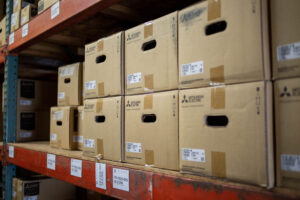
- Where Do I Start On My Generator Installation?

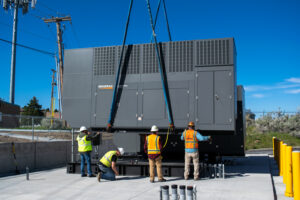
- How can Las Vegas heat lead to generator failures?

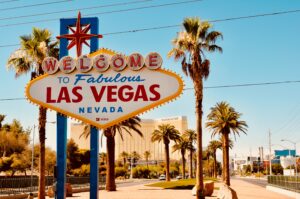



Lead Generator Technician
Graduated from Idaho State University with a degree in Heavy Duty Diesel and Onsite Power Generation. Damien is a master tinkerer and has been working on anything with a motor since he was about six years old. Besides being a generator fanatic, Damien is also an avid snowmobiler and aspiring world traveler.

